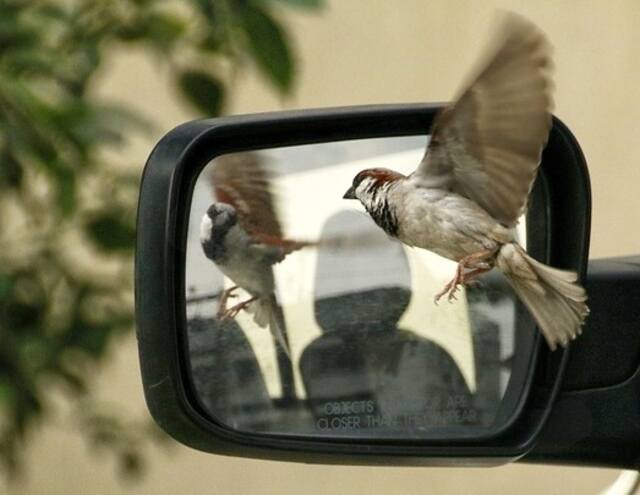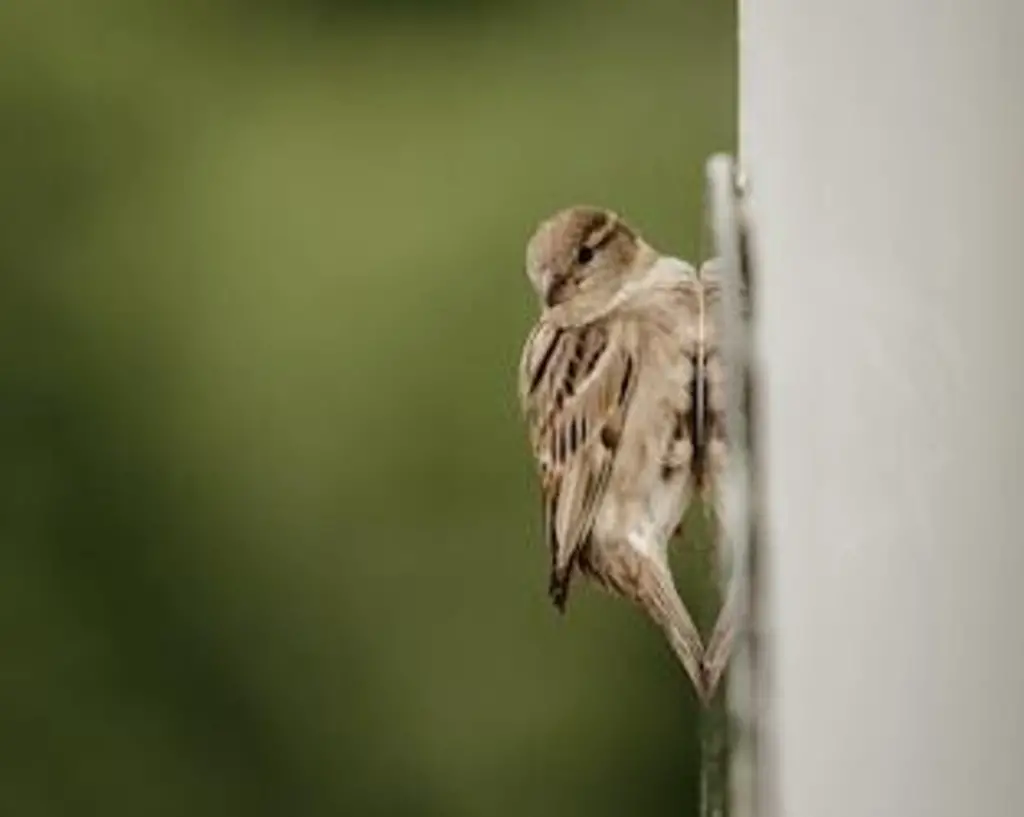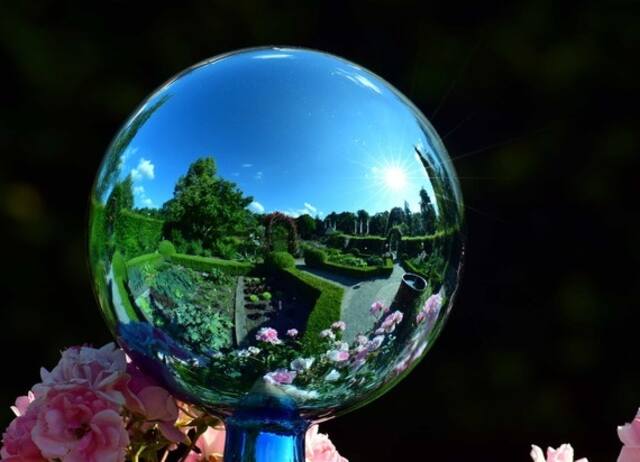Do birds like mirrors in the garden? While this is a question that has been debated for decades, there is no definitive answer, as every species of bird will react differently to seeing its reflection. Some may find it fascinating, while others may be frightened.
Table of Contents
- 1 Do birds like mirrors in the garden?
- 2 How some birds react to mirrors?
- 3 Will a mirror scare birds away?
- 4 Is it safe to put a mirror in the garden for birds?
- 5 Where is the best place to put a mirror in the garden for birds?
- 6 What do birds think of mirrors?
- 7 Why do birds not like mirrors?
- 8 Where should you not put mirrors in your garden for birds?
- 9 How high should mirror be from ground in your garden for birds?
- 10 Do mirrors crack in cold weather?
- 11 What bird recognizes itself in the mirror?
- 12 Why do birds jump at mirrors?
- 13 Do crows like mirrors?
- 14 Why are birds attacking my garden mirror?
- 15 Author
Do birds like mirrors in the garden?
In general, many species of songbird are intrigued by their reflections and can often be observed examining their own likenesses with interest. They may preen before the mirror or even use it to communicate with one another.
Similarly, some birds such as parrots can recognize themselves in a mirror and have been known to make attempts at interacting with their own reflections by touching or talking back to them.
How some birds react to mirrors?
On the other hand, some smaller birds like finches are very timid and shy away from any unfamiliar object they encounter in their environment, including a mirror. This behavior could be due to fear of an unknown predator lurking behind the reflective surface.
Additionally, territorial birds might view another bird’s reflection as an intruder on their territory, which could cause them to become aggressive towards the perceived rival bird seen through the looking glass.
Ultimately, whether or not your feathered friends enjoy having a shiny new addition in your backyard largely depends on individual species characteristics and how comfortable they feel around unfamiliar objects or environments within your garden space,
Will a mirror scare birds away?
Yes, a mirror can be used to scare birds away in many cases. This is because the reflection of the bird itself confuses and frightens them. The reflection from the mirror acts as an unfamiliar predator, causing birds to flee or avoid the area altogether.
Mirrors should be placed at eye level or above so that they reflect the sky and other objects, making them more noticeable to birds. They should also be positioned safely away from windows and other places where birds may land.
When using mirrors to deter birds, place them in a strategic location near where unwanted bird activity is taking place to maximize their effectiveness.
Is it safe to put a mirror in the garden for birds?
The idea of putting a mirror in the garden for birds may be an intriguing one, but it can actually pose some risks. While it may seem like a harmless addition to your outdoor space, there are some potential issues that you should consider before placing the mirror.
First, mirrors can create false reflections and cause confusion or distress to certain bird species. Birds rely on their vision to recognize other birds and find food sources, so if they see something off-putting in the reflection of the mirror, they may become scared away or even aggressive.
It’s also important to note that mirrored surfaces can reflect sunlight and create dangerous hot spots that could injure vulnerable birds as well as damage plants in your garden. In addition to these potential hazards, mirrors can also attract curious predators like cats or hawks.
While it is unlikely that these animals will actively seek out prey at your home, having an inviting reflective surface could draw unwanted attention from these potentially dangerous predators.
For all of these reasons, it is best to avoid putting a mirror in the garden for birds unless you have done extensive research on the topic and are prepared to mitigate any associated risks.
If possible, opt for natural elements such as rocks and branches instead – they will provide more enriching experiences for wildlife without posing any safety concerns!

Where is the best place to put a mirror in the garden for birds?
The best spot for a bird’s mirror is somewhere high up, preferably on a tree trunk or branch, allowing them an aerial view of the reflection. This height allows more birds to be able to see it at once, increasing the chance that they will find it interesting enough to come closer for a better look. The area around these spots should also be clear so that they have an unhindered view of what’s going on below them.
If you don’t have any suitable trees nearby, then you can hang your mirror off another structure, such as a fence post or wall – just make sure it is high enough off the ground that birds won’t have too much difficulty seeing it from above.
Additionally, hanging mirrors close enough together that several birds are able to see themselves in one glance may help increase their interest even more than if only one bird was visible at a time.
Finally, having some additional treats like bird feeders close by might also encourage birds to stay longer and allow you more opportunities for observation and enjoyment.
What do birds think of mirrors?
Most birds, such as parrots, crows, and ravens, seem to recognize their reflection in mirrors but some are not sure what they are seeing. Studies have shown that some birds will interact with their own reflection or even become aggressive when confronted with a mirror. Parrots are amongst the most intelligent birds and have a clear understanding of self-recognition when it comes to mirrors.
They can see themselves as distinct from other birds or objects. Parrots often use their reflections to observe themselves and others, which helps them learn how to communicate better with those around them. Some parrots will also engage in courtship behaviors when viewing their own reflection in a mirror. Crows and ravens may recognize their own reflection in a mirror, but generally do not react to it as parrots do.
Crows tend to investigate the reflective surface more closely than any other type of bird, whether it be by pecking at it or using their beak or feet to explore its edges. Ravens usually ignore the presence of a mirror altogether unless food is present; then they tend to become territorial towards their own reflection, just like they would against another bird invading its space.
The reactions that smaller passerine birds have towards mirrors varies greatly between individual species, but many show no interest at all in the reflections presented before them. Some smaller passerines, such as finches and sparrows, may mistake their own reflections for another bird entering into their territory and thus become defensive or aggressive towards it.
In conclusion, different types of birds exhibit different reactions towards mirrors due to differences in intelligence level, habitat size/environmental factors, social interactions with humans, etc.
For example, while parrots may recognize themselves in a mirror and act accordingly (i.e., preening), crows seem more curious about the object itself rather than recognizing who is looking back at them from within its shiny surface..
Smaller passerine birds appear indifferent towards mirrors — ignoring them completely or acting aggressively if provoked by their own reflection — suggesting low levels of avian self-awareness when compared to larger parrot species.
Why do birds not like mirrors?
Birds do not like mirrors because they can’t recognize their own reflection and think it is a competing bird intruding on their territory. When they see this ‘intruder’ in the mirror, they may become alarmed and will often attack it by pecking at it or flying toward it.
The reflection of their movements can also further confuse them, which adds to the confusion and stress that birds feel when facing a mirror. The problem is exacerbated if multiple birds are living in close proximity.
If one bird reacts aggressively towards its own reflection, other nearby birds may join in as well, creating an aggressive flock of birds attacking the ‘intruder’. This behavior is seen most often with caged birds, but can happen outdoors too.
Where should you not put mirrors in your garden for birds?
When considering where to put mirrors for birds in the garden, there are a few locations you should avoid. Mirrors should never be placed near bird feeders or nesting boxes as this could frighten away the birds. The bright reflection of light from the mirror may also startle and confuse them.
Additionally, it is dangerous for small birds to fly close to larger reflective surfaces, so only shallow angles should be used when placing mirrors in the garden. It is best to place them low to the ground or up on an elevated surface that won’t encourage birds to fly too close.
Finally, make sure not to leave any gaps around your mirror, since they can be hazardous if birds become stuck inside them. With these safety tips in mind, keeping mirrors out of harm’s way can help ensure that backyard birds stay safe and healthy!
How high should mirror be from ground in your garden for birds?
When hanging a mirror in your garden for birds, it is important to ensure that the mirror is hung at an appropriate height. The ideal height from the ground should be between 6-12 feet. This will ensure that the birds can get a good look at their reflection, but still remain safe from any potential predators in the area.
Make sure that the mirror is securely fastened so that the wind does not knock it over and injure any of the birds. It is also a good idea to place vegetation around the mirror for added protection and privacy.
The placement of mirrors should also take into account local trees and other structures, as well as ensuring that any reflections are not too glaring or distracting for wildlife.
Do mirrors crack in cold weather?
Yes, mirrors can crack in cold weather. This is due to the brittle glass of a mirror being susceptible to cracking under extreme temperature changes. The sudden temperature change from warm air inside a home to cold outdoor air can cause condensation on the surface of a mirror and when combined with low temperatures, this can lead to small cracks in the glass.
What bird recognizes itself in the mirror?
The Magpie and Crow is two of the few birds that can recognize itself in a mirror. Scientists conducted experiments with magpies and crows and found that they responded to their own reflections when shown in a mirror, recognizing it as themselves.
They would react differently to the reflection than to other objects or animals, indicating that they could identify themselves. This demonstrates cognitive abilities far more advanced than previously thought for these birds.
Why do birds jump at mirrors?
Birds may jump at mirrors because they perceive their reflection as a potential rival. They may feel the need to protect their territory from this “intruder,” and will attempt to drive it away. This behavior is usually seen among male birds, as they are typically more territorial than females.
It can be observed in some domesticated birds that have been housed near mirrors for long periods of time. It is important to ensure that the bird’s environment remains free of anxiety-inducing reflective surfaces.
Do crows like mirrors?
Yes, crows do like mirrors. They usually treat them as they would any other object, by pecking at or investigating it. In some cases, they may even recognize themselves in a mirror and approach it with curiosity. Crows also enjoy playing with their reflections and will often make use of them to preen their feathers.
Why are birds attacking my garden mirror?
Birds often mistake their reflection for another bird, and may become territorial when they see it. This can lead to them attacking the mirror in an attempt to remove what they think is a threat from their territory.
Additionally, some birds may be attracted to the shiny surface of the mirror and could peck at it as part of exploratory behavior.
Related Post: Can Birds See Glass? The Eye-Opening Truth!




